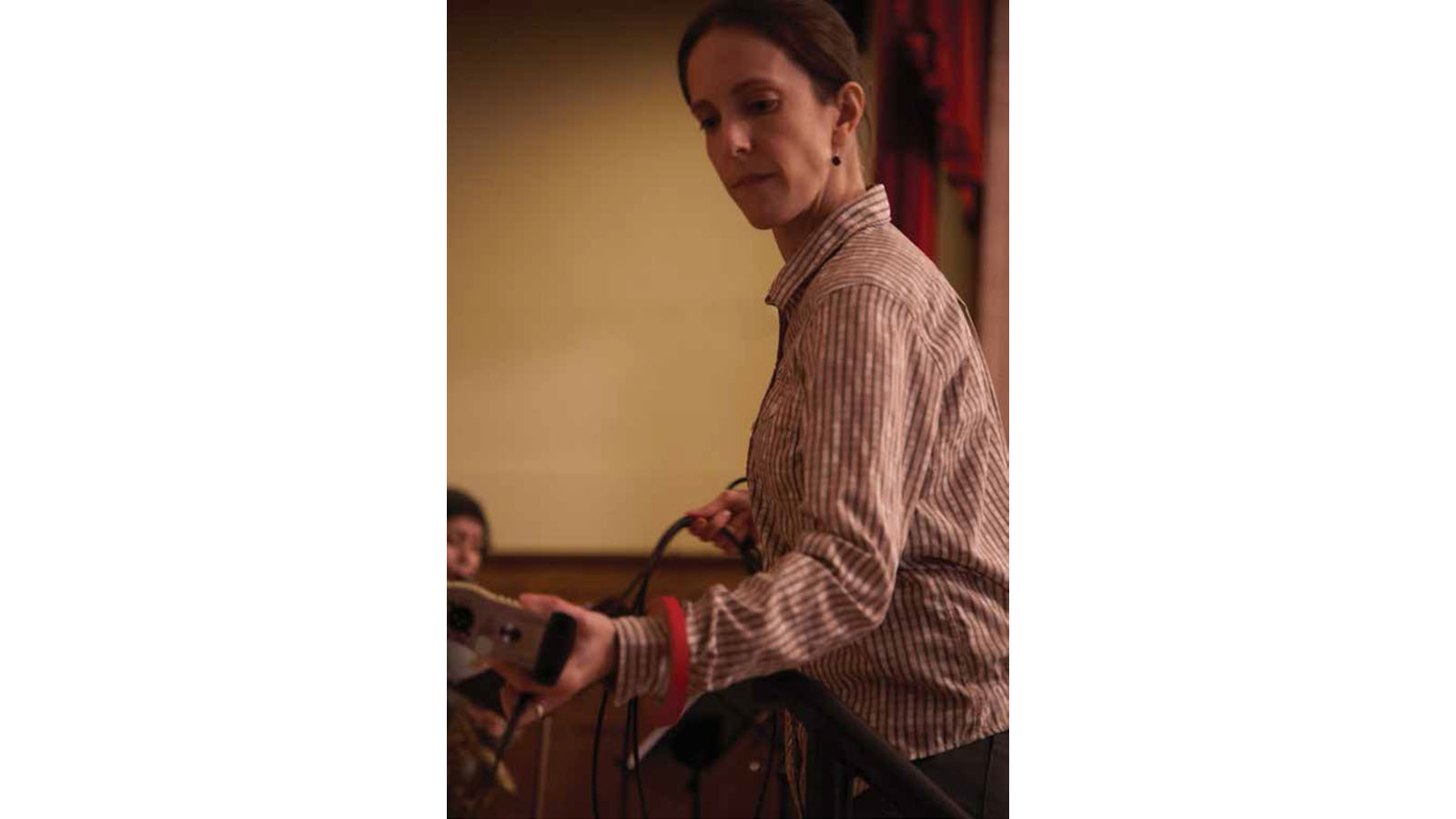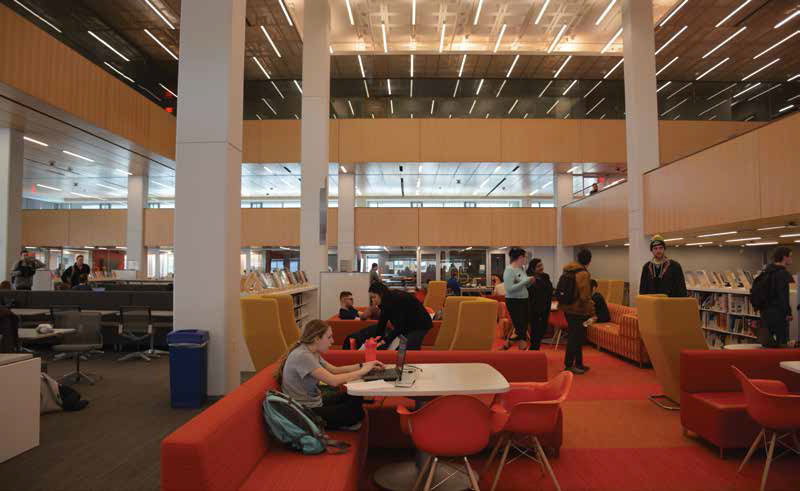WIT's Pierson on Guiding Campus Tech Synergy
Some kids serve specific roles in the family: the reigning Monopoly champion, the consummate entertainer, the sports hero. Johanna Pierson was her family’s tech support. “I was basically the computer repair technician for my family,” she recalled. “I was the one who set up the sound systems and video game systems. I was one they called to program the remote.”

With an early talent for solving problems and a perennial sense of curiosity, a career in audiovisual technology was a natural evolution for Pierson. Now in her fifth year as a media support specialist with the division of technology services at Boston’s Wentworth Institute of Technology (WIT), Pierson is dedicated to bringing AV to the next level. Having earned her AVIXA Certified Technology Specialist (CTS) accreditation and studying for Crestron certifications, she is investing in her skills to bring AV and IT into stronger alignment.
FOSTERING FUTURE AV ACUMEN
A native of Maine, Pierson parlayed her hobby into a career. She logged her first AV hours as an undergraduate. “I started as a student work-study employee in the University of Southern Maine offices doing media classroom support.”
With stellar mentorship at her university—including the tutelage of a female department head—Pierson gained valuable hands-on experience with classroom technology that she has leveraged as a media support specialist at WIT.

WIT, with a record of excellence in engineering, technology, design, and management education, has a student enrollment of more than 4,200. Depending on the time of year, Pierson directly manages between five and 10 student workers on the AV team. But that’s not all.
“We’re a dual AV and IT office, so we also have anywhere from 30 to 40 additional students working with the help desk, network operations, laptop repairs, and the like.”
AV’S CAREER DYNAMISM
The ever-evolving nature of AV is both a challenge and an opportunity to learn new skills. “Every day is different,” Pierson said, “because we run not only support for classroom technologies, but we also run live events on campus. Any day could see six classrooms [offline], perhaps due to a power outage over the weekend, so we fix those. Or, it could be the athletics department has a game and they want to practice with the sound system in the gymnasium. It could be that the board of trustees has a big meeting in the boardroom and they need support. Any or all of those things could be happening on any given day.”
A daily selection of features, industry news, and analysis for tech managers. Sign up below.
On top of that list, Pierson also streams and edits video, and the WIT team manages ongoing projects, such as replacing wireless microphones due to the new FCC spectrum laws. “We’re a pretty busy office,” she enthused.
To stay current with the latest developments in AV, WIT partners with the integration firm AVI Pro, based in New Hampshire. “Our vendor is great,” Pierson said, “and always willing to recommend equipment to us.”
She attends InfoComm, events like the AV/IT Leadership Summits, and manufacturer-led courses to stay up to date with new technologies.
AV AND IT BEST PRACTICES
At WIT, AV and IT share the same office, and the close proximity has its benefits. “Sharing the same space provides instant access to each other,” Pierson said. “When I need a static IP address, I just ask for it. The fact that we are able to just see each other every day, we know each other really well. We know whom to go to for individual issues.”
Sharing the same office also allows AV and IT specialists to do a little cross-specialization. “I’m working on learning more about AV over IP, so I can work better with them.”
IP-BASED AV: NO MORE DISRUPTIONS

WIT recently implemented a new AV-over-IP system covering several different classrooms and event spaces. Control and management are much easier, but there is another network advantage: coverage. Pierson appreciates that the new wireless microphones run over IP instead of radio frequencies.
“We have one of these new systems in our largest auditorium on campus. We would always be running into frequency issues with our radio wireless microphones because it was directly above an office and they would be microwaving things. We also have a radio station on campus, and we’re in the middle of Boston, next to a fire station. Anyone driving by could have something that could give us a serious problem with our microphones. We had a mobile mixing board cart that we used to use in there, and we had to remove multiple microphone receivers from that cart and replace them with different ones because every time we tried a new one in there, we’d find another frequency space that was being disrupted by some piece of equipment, and we didn’t even know where it was.”
Implementing an AV-over-IP system removed all of those problems; the team can use the microphones anywhere in the auditorium without any concern about whether or not there’s going to be drop or click. “They just work,” she said.
AV STANDARDIZATION
In higher education, diverse users operate the AV equipment, from veteran professors to adjunct faculty, to students. Standardization is one of WIT’s strategies for ensuring a consistently intuitive user experience.
Standardization of a user interface is key because no professor is in the same room all day, every day, Pierson explained. “They move. They are in different laboratories for different specialties. It makes it much easier for professors if they walk into a classroom and it looks the same as their other rooms on campus.”
If there are new pieces of equipment or additional functionalities, it should be as simple as scrolling through options and choosing what the user is comfortable with. Even if the control panels don’t all look the same, the process should be intuitive enough to grasp immediately as a user walks into a room. “We run the gamut between professors who’ve been here for 50 years, and new adjunct professors who used to be students here,” Pierson added. “We need to serve the lowest common denominator of tech knowledge.”
An intuitive UX is one way to meet both of those needs.
TAKING AV SECURITY SERIOUSLY
Taking a more IT-centric approach is one way to advance the notoriously siloed AV industry. Beyond that, a serious look at interoperability is also important, Pierson said.
“The Internet of Things is barreling down the highway at us, and if it doesn’t put the brakes on, it’s going to smash into the wall and destroy everything. AV professionals need to be much more careful about security when it comes to connected devices.”
Pierson makes a strong case for enterprise-level security of AV on campus. “Any kind of AV, especially an AV-over-IP system, needs to have considerable security. We’re starting to look at getting our own VLAN.”
The WIT team observed that the proliferation of wireless devices and BYOD also increases the need to safeguard solutions. “Every day, somebody brings something new on campus that we have not encountered before, and we need a way to integrate it all.”
THE 911 WAKE-UP CALL
With a high quotient of gamers on campus, the WIT team looked into supporting voice chat for the game Overwatch. “It’s one of the most popular games on campus,” Pierson explained.
However, Overwatch runs its built-in voice-chat function over a P2P network, which is not permitted on campus due to the enterprise-level security.
“We were getting a lot of questions about Overwatch,” Pierson said. A network operations specialist made it a project of his and organized a group to play and test the game with the live voice-chat function activated. That’s when things went south: the team received a call from the university’s public safety office. The settings that the network operations team were testing were interfering with the ability of the school’s voice-over-IP phone system to call 911. “That was a very short experiment,” she said.
EMPHASIZING INTEROPERABILITY
The 911 snafu underscores the challenge of the BYOD landscape: how to balance a happy user base and a secure system. This is the key for all upcoming AV developments, Pierson argued, with the Internet of Things becoming more popular. “The more that we can integrate with each other, the better off we will be. Rather than everyone having their own little silo or their own proprietary technology that you have to use only with a specific system, and cannot be used with anything else.”
The future is in solutions like Zoom Rooms, Pierson opined, and in wireless media functionality. “It’s in the ability for all these systems—even systems that don’t exist yet—to talk to one another and interface with one another to create a true network of AV.”
Margot Douaihy is the editor-at-large of AV Technology and an instructor at Franklin Pierce University.
Info
WENTWORTH INSTITUTE OF TECHNOLOGY
wit.edu
AV Highlights at WIT
LECTURE CAPTURE
Seneca Video Capture Appliances for Panopto
WIRELESS PRESENTATION AND COLLABORATION
We are testing the Crestron AirMedia 2, wePresent WiCS-2100, and the Mersive Solstice Pod.
LASER PROJECTION
We recently purchased Epson PowerLite L610U projectors for our new building project.
WIRELESS AUDIO
At least two of our new rooms are using the Shure Microflex solution.
—Johanna Pierson, CTS
Margot Douaihy, Ph.D., is a lecturer at Franklin Pierce University.

